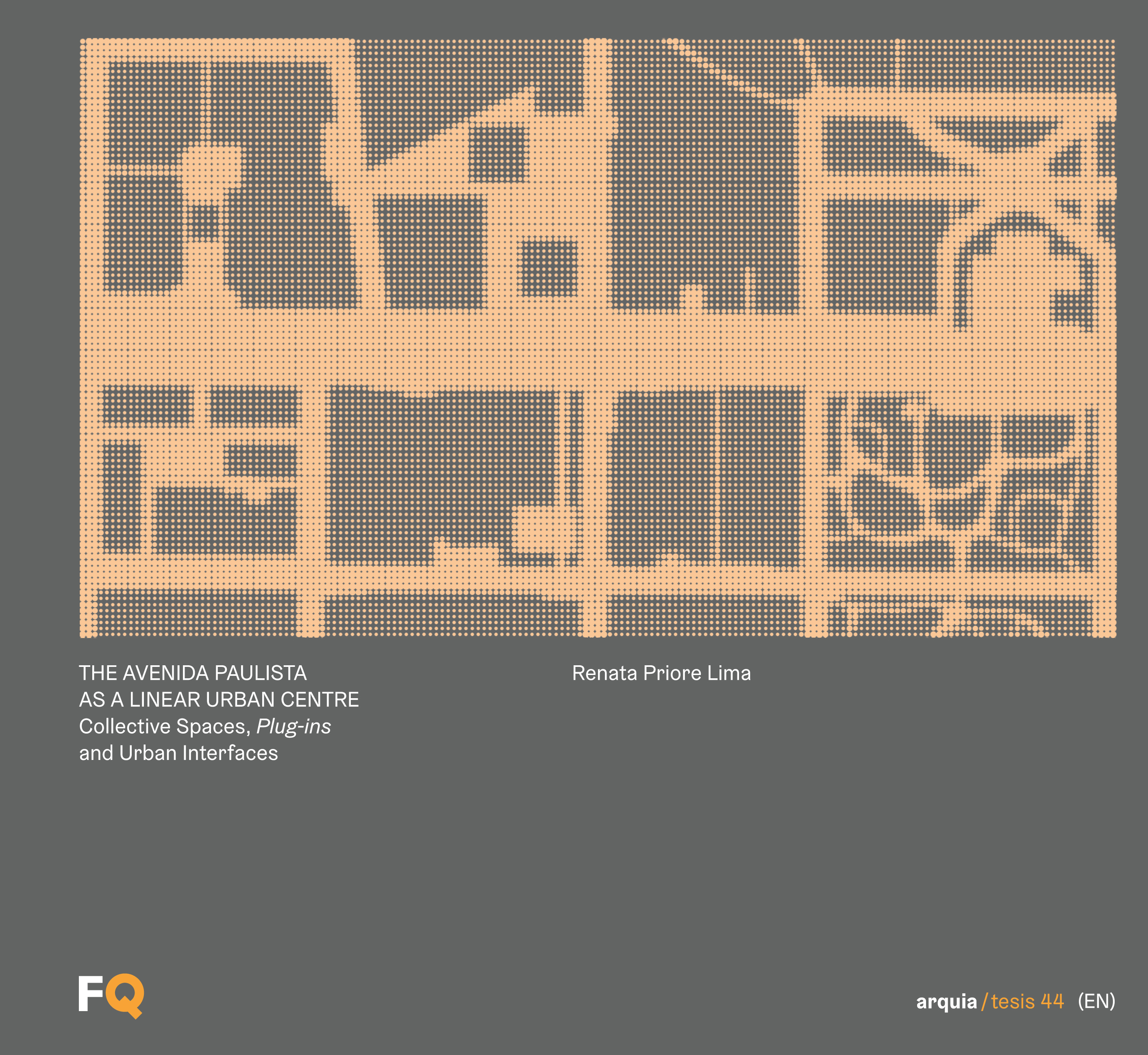The Avenida Paulista as a Linear Urban Centre
Awarded on the 2nd Edition Manuel de Solà-Morales European Prize, thesis on urbanism, 2019
The building-city relationship, which links the architectural dimension of urban space to the urban dimension of architecture, so-called plug-in, constitutes the common thread of the ideas presented in this research. This also covers the topic about urban centralities and collective spaces in the context of the urban development of Avenida Paulista in São Paulo. The thesis considers that urban centres assume new forms and dynamics. Such is the case of linear centres, organized by rectilinear structures of boundless growth that structure designs, flows, activities, infrastructures and a set of notable buildings connected by a complex network of collective spaces. As it happens in Avenida Paulista, these are often characterized by miscegenation and express the hyper-connected ways of life in modern society.
These premises, developed throughout the different chapters, are based on analyzes of relevant theoretical references from Brazil and Europe, as well as on documents, photos, regulations, plans, projects and information taken in situ and organized in graphic diagrams at different scales, without ever losing sight of a historical perspective. Likewise, they show the value that the avenue acquired as a locus of experimentation for the international architectural and urban avant-gardes, expressed in its original project from the end of the 19th century and in its different stages until it became the epicenter of the metropolis. Finally, the new forms, strategies and guidelines of contemporary collective spaces are highlighted, which have created intensities and permeabilities across the ground floor beyond the parameters of functionalist and traditional cities.
Índex:
- FOREWORD. Estanislau Roca Blanch
- INTRODUCTION
1. THE BEGINNING OF SÃO PAULO’S URBAN PLANNING CULTURE
2. THE URBAN DESIGN FOR THE AVENIDA PAULISTA
3. A CITY OF BOUNDLESS GROWTH AND THE MODERN
4. THE CENTRALITY OF THE AXIS DEVELOPS
5. A NETWORK OF CONTEMPORARY COLLECTIVE SPACE AND ITS PLUG-INS
- APPENDICES
ACKNOWLEDGEMENTS
Editorial Fundación Arquia. Editorial coordination: Yolanda Ortega Sanz (FQ), Design and layout: gráfica futura, Print: Artes gráficas Palermo







No hay comentarios ni valoraciones para este producto.
¡Sé el primero en comentar y valorar!